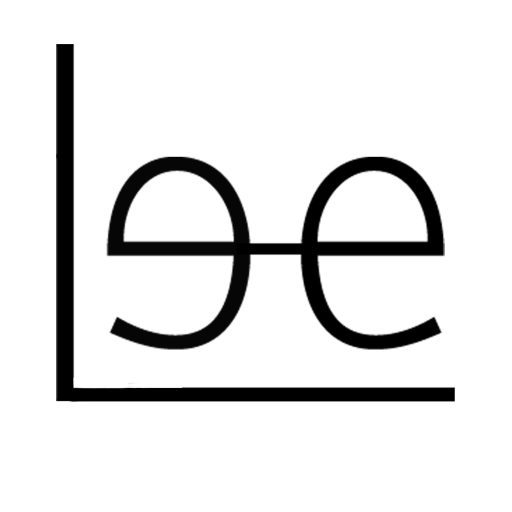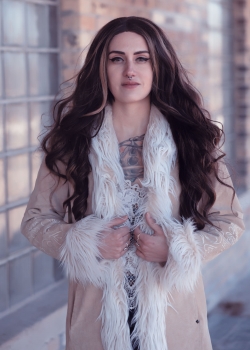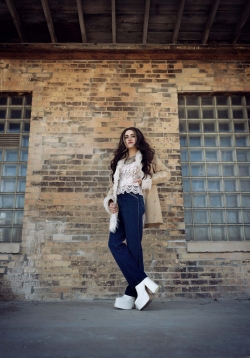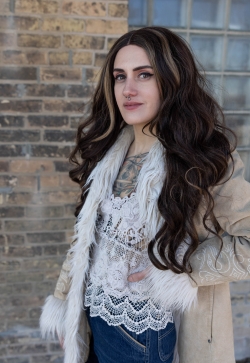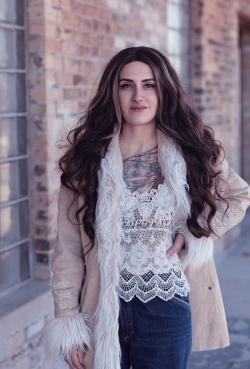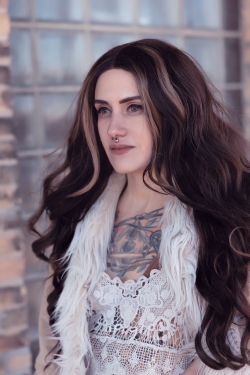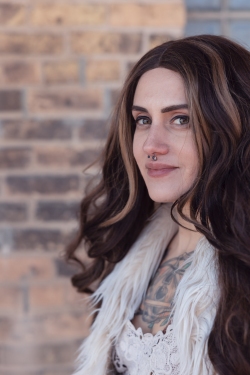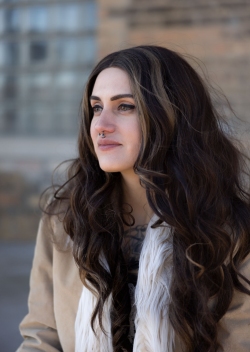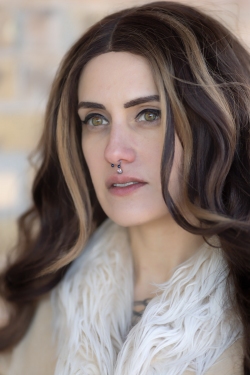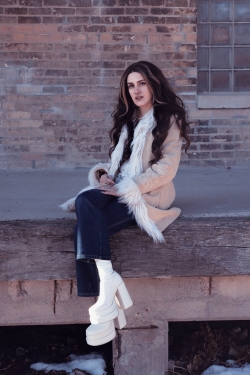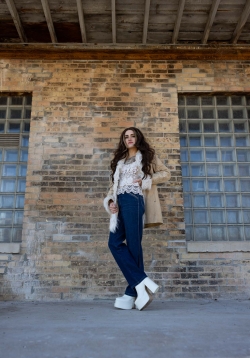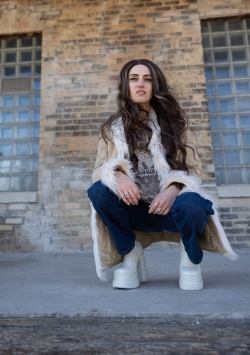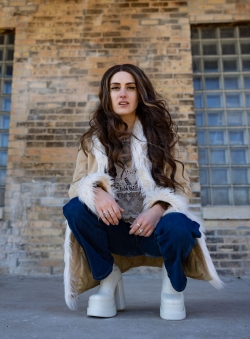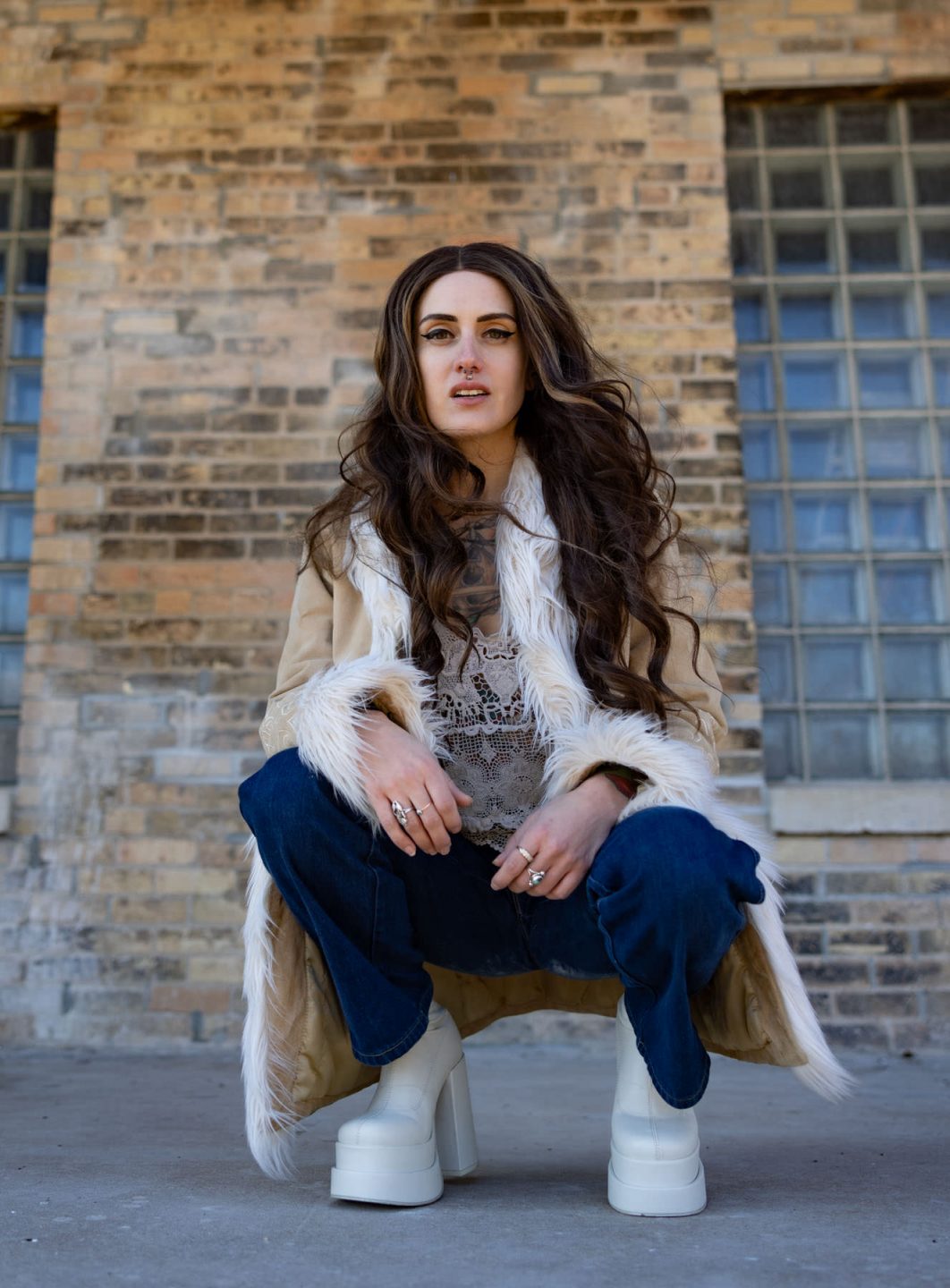
The weather forecast was for unseasonably warm temperatures so we set up some tintype sessions. While it was warm (especially for the end of January) there was still a chilly wind. But somehow Rachel managed to hold back the shivering long enough to hold still for a set of tintype photos. We also managed to capture a nice set of digital photos. So let’s go behind the scenes at Rachel’s tintype session.
Here we see a comparison shot of a tintype and a digital of the same pose. Remember, the tintype is not a filter or a digital manipulation. It is a 5x7in image on metal made directly in the camera. The image is pure silver metal. Other differences include:
- Tonal shifts. Collodion, the photographic medium in tintypes, is sensitive to different colors of light than digital sensors. A tintype will show blues as almost white and reds & oranges as black.
- Subtle differences in the face and body shape because the focal length of the lenses are different. Focal Length Impact is a well known factor in photography – see my link for more visuals
- The tintype image is reversed! Left is right and right is left. Tintypes are actually negatives so everything is backwards.
- Image resolution. The digital is from a Canon R5 camera with a 45 megapixel sensor. The 5×7 tintype has dramatically more resolution – maybe as much as 1000 or 2000 megapixels. The images is formed from atoms of silver metal so even a microscope would not show “grain”.
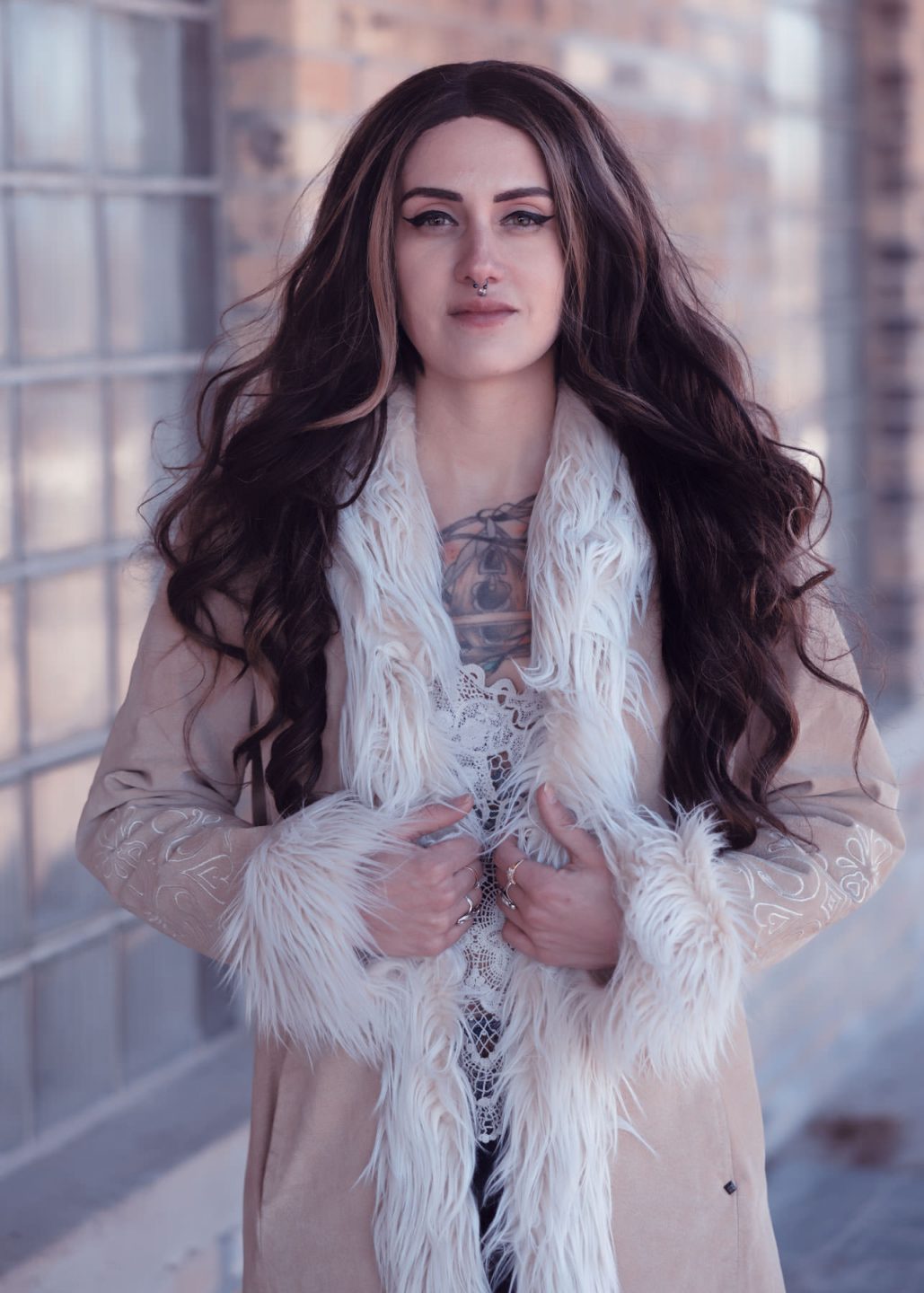
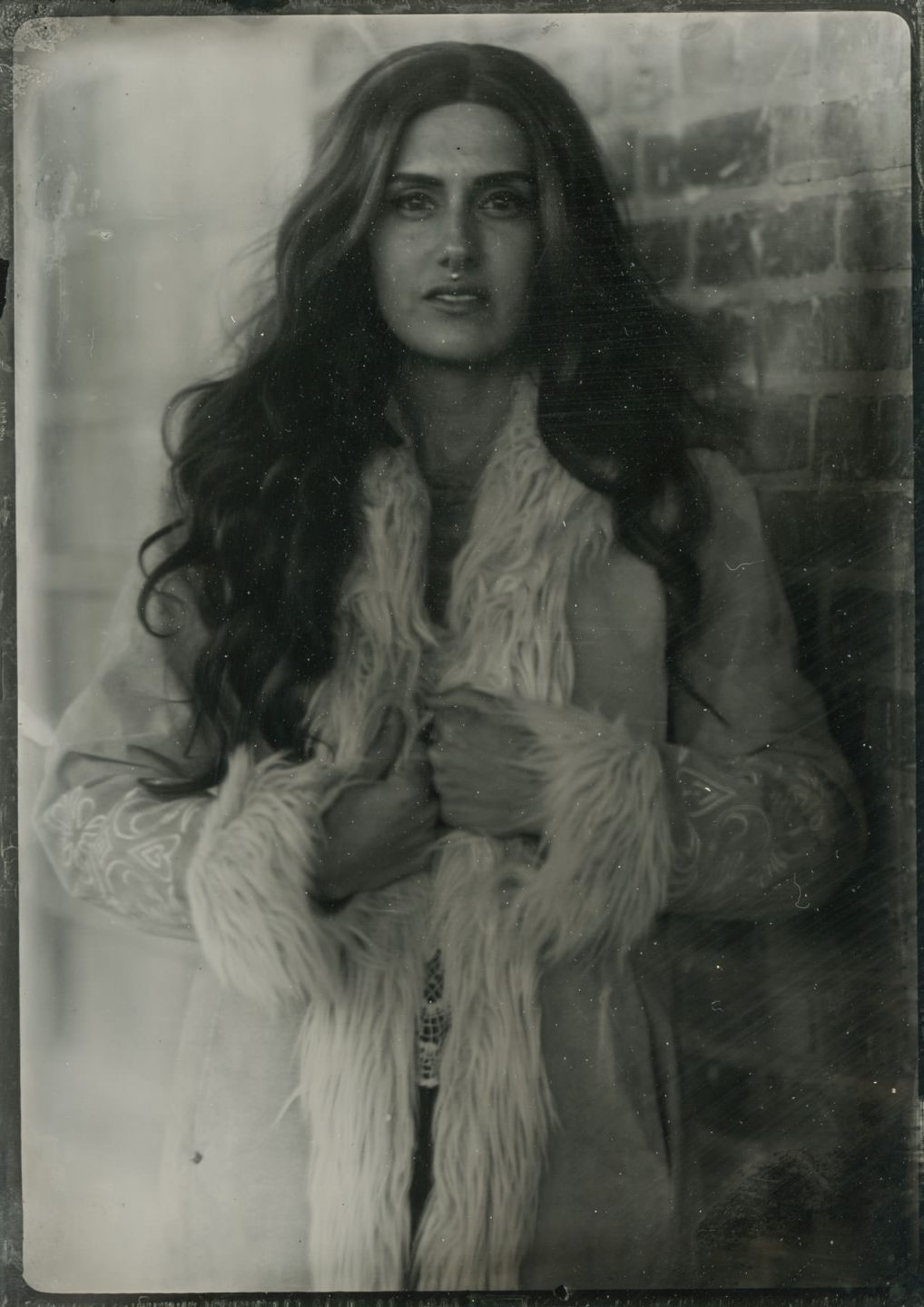
Our next set of photos uses different treatments of the same picture. The joy of digital is you can do unlimited photo manipulation. Here I used different color look up (LUT) files to change the look of the photo. LUTs are an essential part of color grading for movies and I love to use then for still photos. The Matrix “green” cast is an example of a LUT – each scene in the Matrix has a consistent look and feel.
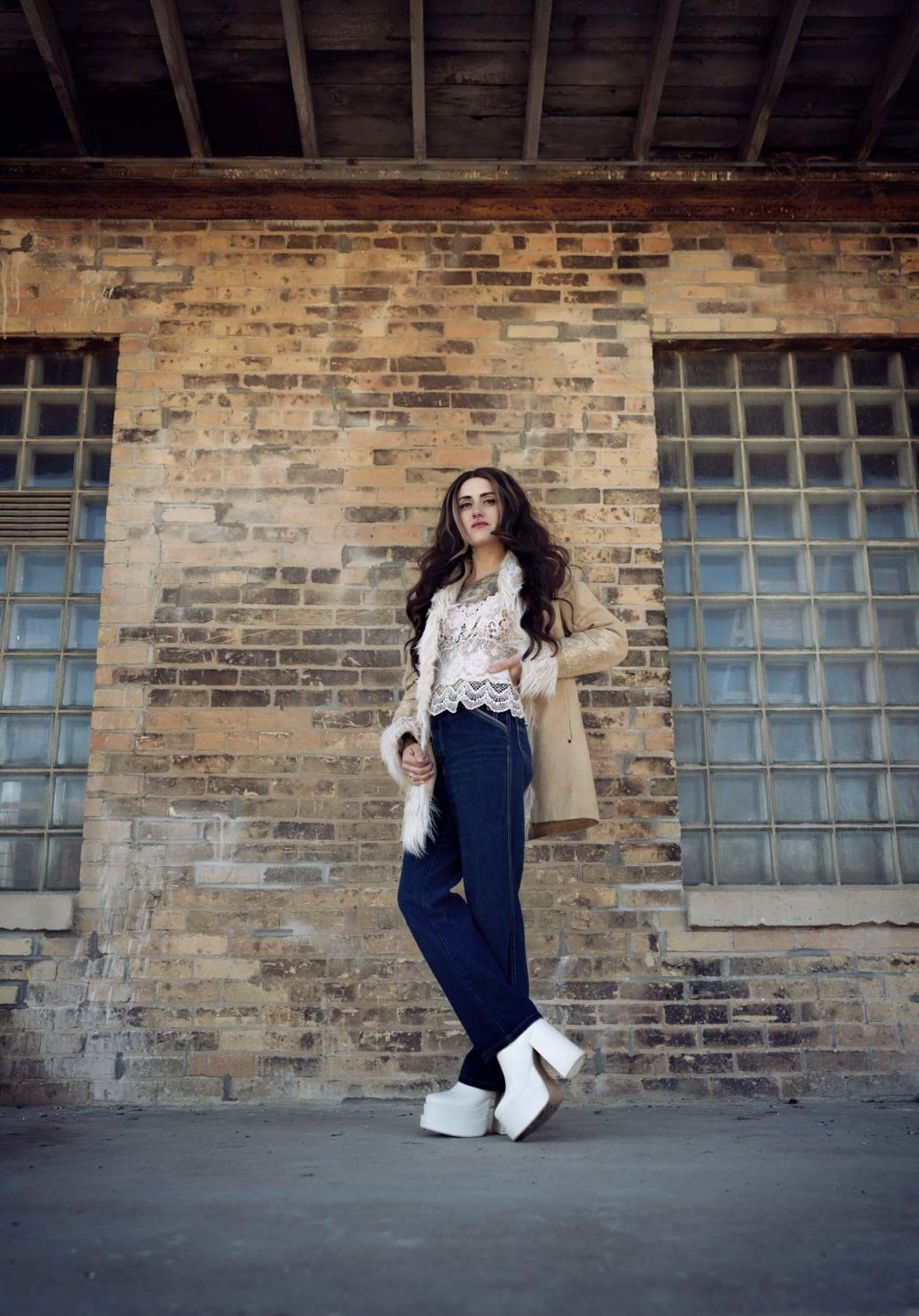
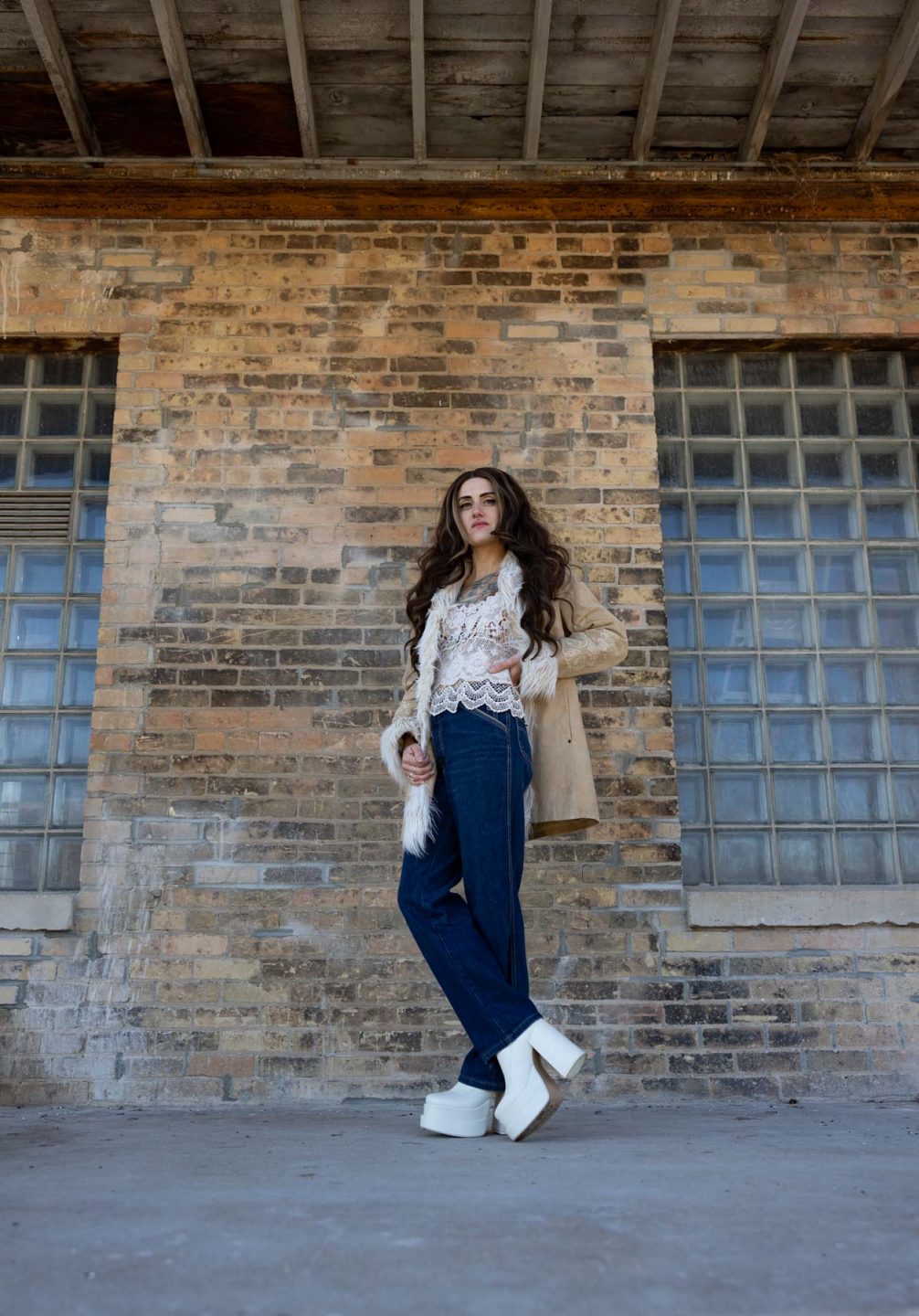
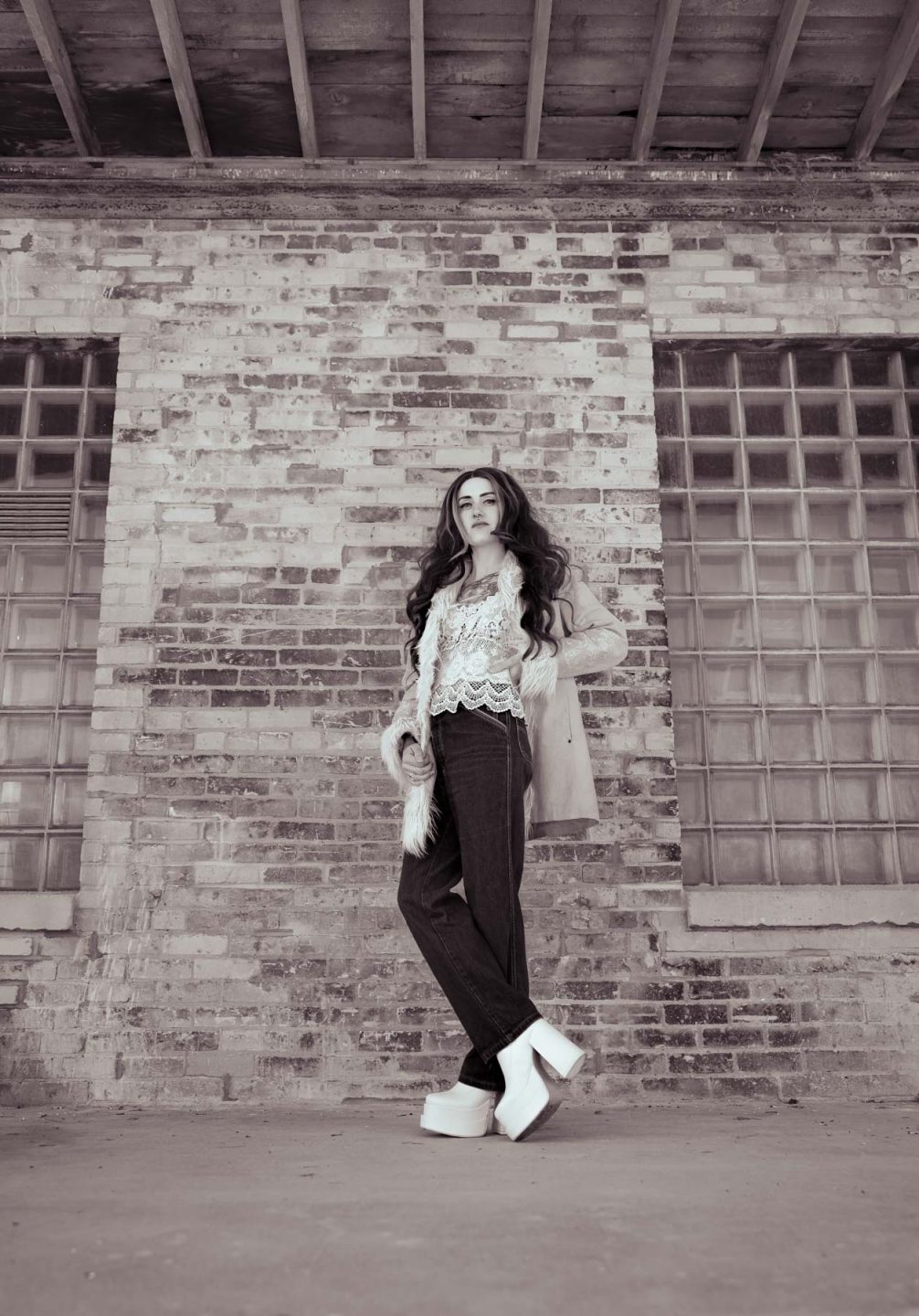
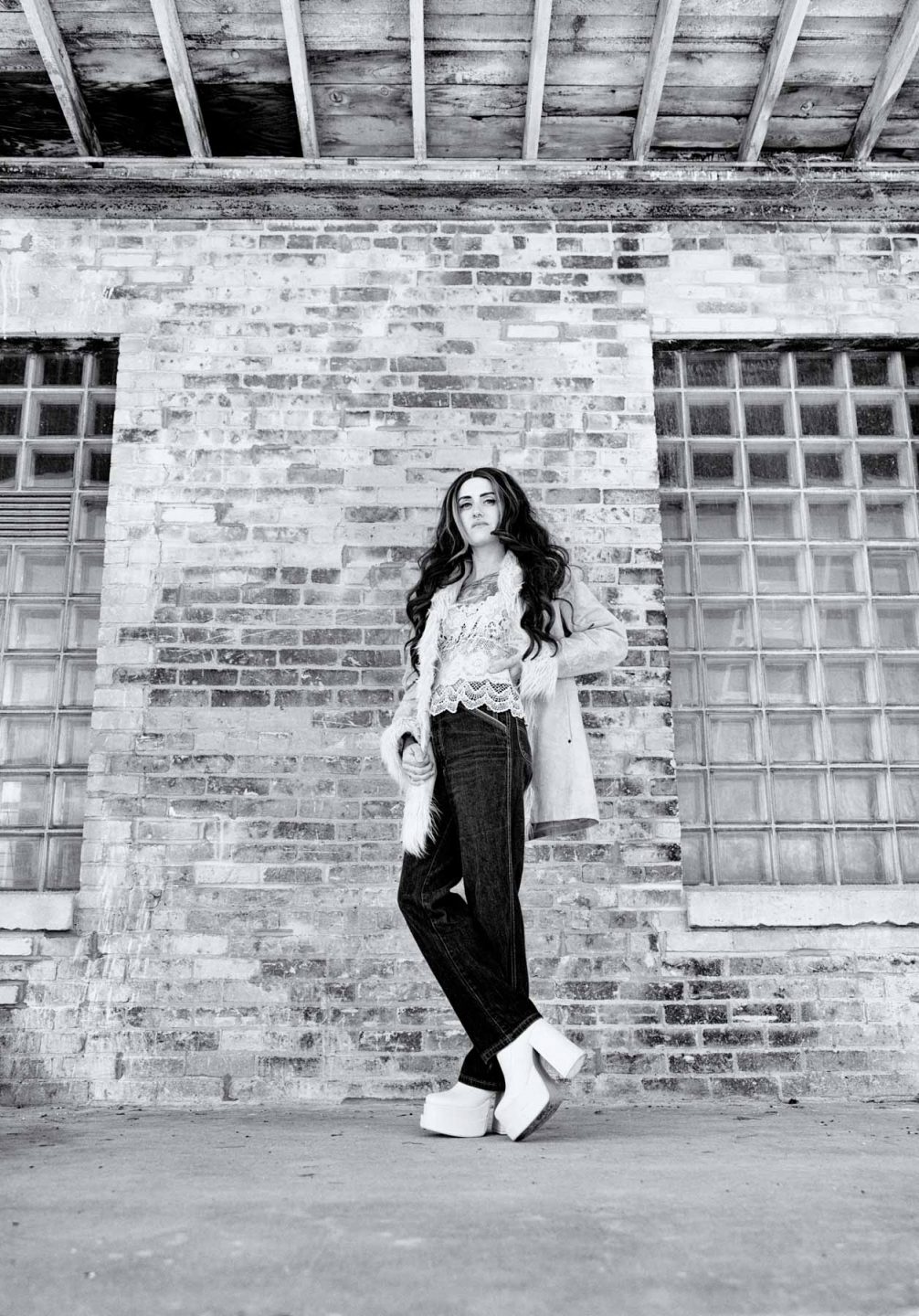
My last grading was all black and white. I like tintypes because of their visual quality and tonality. You can achieve a similar quality with digital files.
I hope you enjoyed our look behind the scenes at Rachel’s tintype session. You can see her tintypes on my 19th century photography page SunandSilver.photo
Contact Me if you want to talk about your portrait project
Back to my main Modeling Page
Here are all of Rachel’s behind the scenes pictures – enjoy!
